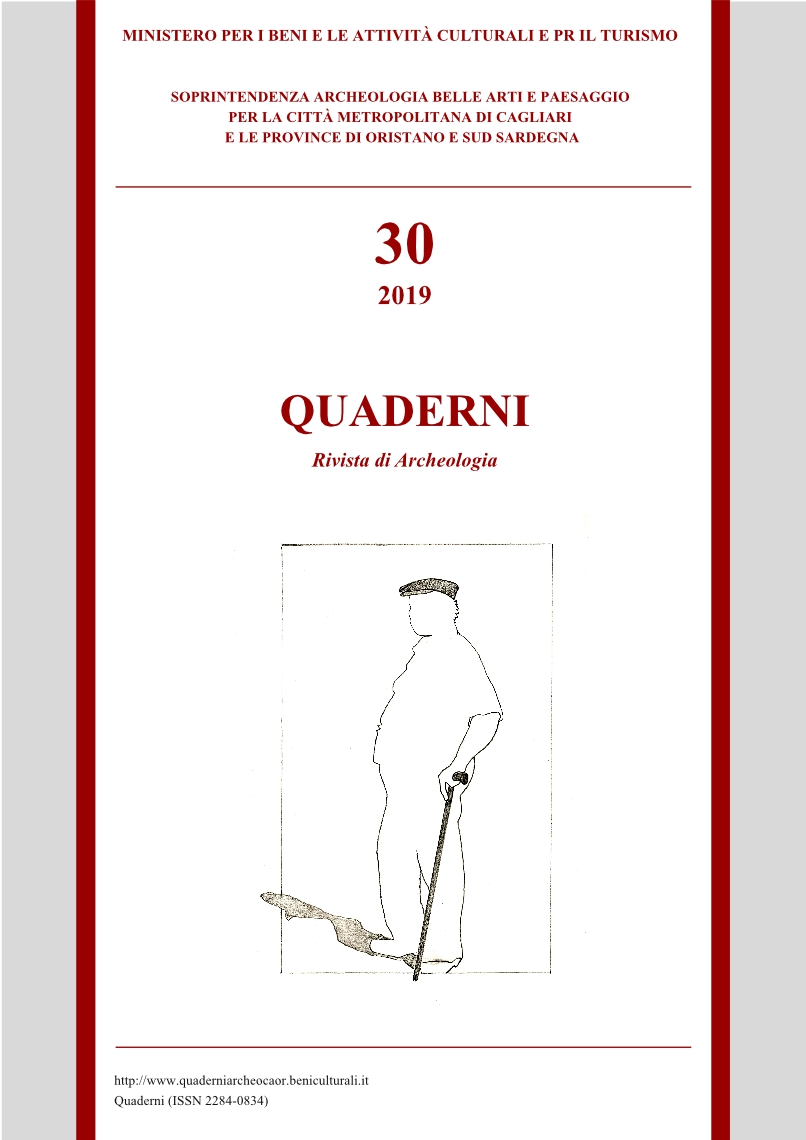Considerazioni archeologiche sulle indagini geofisiche di Mont'e Prama (anni 2013-2015)
Parole chiave:
Mont’e Prama, archeologia, geofisica, fotointerpretazione, georadar, archaeology, geophysics, aerial photograph interpretation, GPRAbstract
La pubblicazione dei risultati delle indagini geofisiche eseguite a Mont’e Prama in anni recenti solleva diverse questioni che devono essere affrontate da una prospettiva archeologica. Le considerazioni esposte nel presente studio riguardano i presupposti, i metodi e i risultati ottenuti con la fotointerpretazione, il georadar e i metodi ARP e geoelettrici. Il confronto tra le “anomalie” geofisiche rilevate e i risultati degli scavi archeologici mette in evidenza che numerose “anomalie” non hanno concreto corrispondente archeologico e che viceversa numerosi manufatti archeologici non sono stati rilevati come “anomalie” geofisiche. Si argomenta che il georadar a 16 canali, che crea illimitate nuvole di “anomalie” puntiformi dovute alla presenza ubiquitaria di piccole e medie pietre sparse, non è in grado di definire i limiti di un sito archeologico. Si afferma che le “anomalie” devono essere interpretate con metodo interdisciplinare, anzitutto dal punto di vista geologico e poi da un’intera équipe archeologica. Infine il grande clamore mediatico richiede una netta distinzione tra il significato tecnico del termine “anomalia” e il significato dato dai non specialisti, che intendono “anomalia” come oggetto anormale e innaturale, spiegabile solo come manufatto archeologico, rudere o preferibilmente statua, cosa che apre la strada al fraintendimento della generale “anomalia” del complesso archeologico.
The publication of the results of the geophysical researches carried out at Mont’e Prama in recent years raises several issues which have to be faced from an archaeological perspective. The observations exposed in this study concern the premises, methods and results obtained using the interpretation of aerial photographs, the GPR, ARP and geoelectrical methods. Comparing the geophysical “anomalies” with the results of the archaeological excavations, it is clear that a number of “anomalies” do not correspond with any archaeological feature and viceversa. The 16-channel GPR, which creates unlimited clouds of punctiform “anomalies” due to small and middle-sized scattered stones, is not able to define the limits of an archaeological site. The “anomalies” must be interpreted with inter-disciplinary method, first from the geological point of view, then by a whole archaeological team. Finally, the great media storm demands a clear distinction between the technical meaning of the word “anomaly” and the meaning given by non-specialists, who understand “anomaly” as an abnormal and unnatural object, explainable only as an archaeological feature, ruin or preferably statue; this involves the misunderstanding of the general “anomaly” of the archaeological site.
Pubblicato
Fascicolo
Sezione
Copyright (c) 2020 Quaderni

Questo lavoro è fornito con la licenza Creative Commons Attribuzione - Non commerciale - Non opere derivate 4.0 Internazionale.





